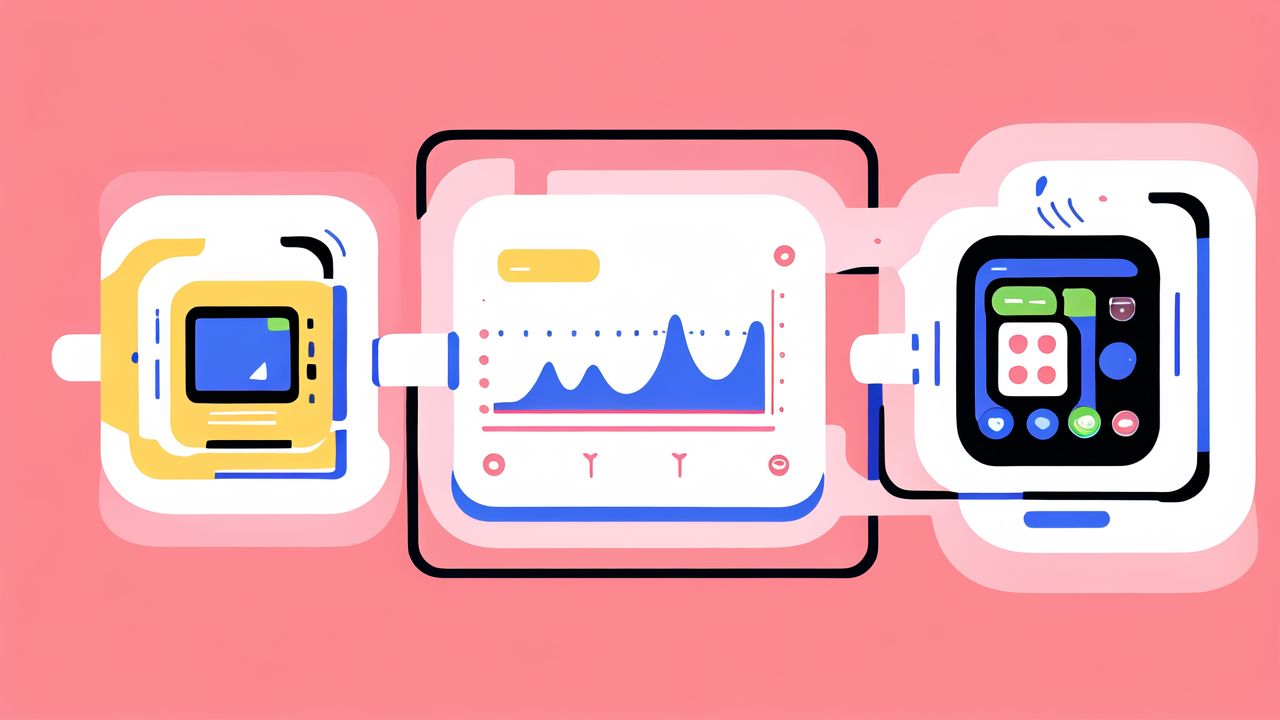Introduction to Pulse Monitoring
What is Pulse Monitoring?
Pulse monitoring is a vital feature in modern devices, especially smart watches. It involves continuously tracking the rate at which your heart beats. This functionality is enabled by sensors on the smart watch that detect blood flow and calculate the heart's pace. By doing so, a smart watch can provide real-time updates on your heart rate, which is crucial for monitoring both health and fitness levels.

Importance of Pulse Monitoring in Daily Life
Pulse monitoring is crucial in daily life as it provides valuable insights into your overall health and well-being. Regular tracking can help detect any unusual changes or trends in your heart rate, which might indicate underlying health issues that require attention. Additionally, keeping an eye on your pulse rate helps in managing stress effectively, ensuring a healthier lifestyle. Whether you're an athlete or someone interested in maintaining good health, pulse monitoring through a smart watch is a simple yet powerful tool to keep track of your heart's performance every day.
How Smart Watches Monitor Your Pulse
The Technology Behind Pulse Monitoring
Smart watches are equipped with advanced technology to monitor your pulse effectively. At the core of this technology is the use of photoplethysmography (PPG) sensors. These sensors emit green LED lights that penetrate the skin to measure the amount of blood flowing through your wrist at any given time. The light absorption varies with changes in blood volume, and these variations are captured to determine your heart rate. Additionally, some smart watches enhance accuracy by incorporating bioimpedance sensors and accelerometers, which help filter out noise created by movement, ensuring more precise readings.
Accuracy of Smart Watch Pulse Monitoring
The accuracy of pulse monitoring on smart watches varies depending on the model and the technology used. Most modern smart watches use optical sensors that emit light to detect blood volume changes in the wearer's wrist. This method is generally effective for everyday tracking but may encounter inaccuracies during high-intensity activities or if the watch is not fitted properly. Manufacturers continually work to improve sensor accuracy through software updates and better hardware. Analyzing the data from these devices should be done with an understanding that some margin of error is inherent, particularly during vigorous exercise or if the device is loose.
Setting Up Your Smart Watch for Pulse Monitoring
Initial Setup and Calibration
To begin using your smart watch for pulse monitoring, the initial setup and calibration are crucial steps. First, ensure that your watch is fully charged for optimal performance. Through the settings menu, select the health monitoring or heart rate features. Follow the specific instructions provided by your device to calibrate the sensors; this usually includes entering basic personal information such as age, weight, and height to help the device provide more accurate readings. You might also need to adjust the fit of the watch on your wrist, ensuring it is snug but comfortable, as poor fit can affect accuracy. Once set up, your watch will be ready to monitor your pulse throughout the day.
Understanding the Interface and Notifications
To effectively utilize your smart watch for pulse monitoring, understanding its interface and notifications is crucial. Initially, familiarize yourself with the main display where your pulse data is shown. Notifications are generally set up to alert you of abnormal pulse rates or when it's time for a periodic check. Dive into the settings menu where you can customize these notifications to suit your daily routine and health goals. For instance, you can set vibration alerts for high pulse rates or reminders for daily heart rate checks. Learning these features will enhance your experience and ensure timely and relevant health monitoring.
Daily Use of Pulse Monitoring on Your Smart Watch
What to Expect: from Resting to Active States
When using pulse monitoring on your smart watch, anticipate variations in heart rate data from different states of activity. In a resting state, your watch will typically register a lower, steady pulse rate. This rate is your baseline and is useful for determining your normal heart health. As you transition to an active state, such as during exercise or stress, expect your pulse rate to increase. This increase is normal and indicates that your heart is working harder to pump blood and supply oxygen throughout your body. Smart watches are designed to seamlessly track these changes, providing real-time insights into your cardiovascular health.
Interpreting the Data: What Your Pulse Says About Your Health
Interpreting pulse data from your smart watch can provide valuable insights into your health. Here’s how to understand what your pulse rate indicates:
- Normal Resting Heart Rate: 60-100 bpm (beats per minute). Consistent rates within this range generally suggest normal heart function.
- Elevated Heart Rate: Above 100 bpm. This might occur during stress, exercise, or due to health issues.
- Lowered Heart Rate: Below 60 bpm. Common in athletes but if unexpected, consult a healthcare professional.
Your smart watch may alert you if your pulse is unusually high or low. In the case of such alerts or if you notice a sudden change in your heart rate patterns, it is advisable to seek medical advice. Remember, while smart watches provide useful initial data, they are not substitutes for professional medical assessments.
Taking an ECG with Your Smart Watch
How to Take an ECG
Taking an ECG (electrocardiogram) with your smart watch is a straightforward process, designed to be user-friendly. To begin, sit quietly and ensure your smart watch is snugly fit on your wrist. Open the ECG app on your watch. Once opened, rest your arm on a flat surface, ensuring it's stable. Then, using your opposite hand, touch the crown of your smart watch. Hold this position for about 30 seconds until the ECG completes. The watch will record electrical signals that reflect your heart activity. Follow any on-screen instructions as they may provide additional steps or guidance.
Reading and Understanding ECG Results
After taking an ECG with your smart watch, the next step is to read and understand the results. Typically, the smart watch will display the ECG in a simple graph that indicates heart rhythm and intensity. Look for any irregularities such as skipped beats or abnormal rhythm patterns. Most smart watches that offer ECG monitoring also provide explanations or basic analysis, informing you if there are signs of atrial fibrillation or other heart conditions. For detailed analysis, you can often export the ECG data to your smartphone or directly to your healthcare provider. Remember, smart watch ECGs are useful for preliminary monitoring but are not a substitute for professional medical assessments.
Advantages of Smart Watch Pulse Monitoring Over Traditional Methods
Convenience and Accessibility
Smart watches offer an unparalleled level of convenience and accessibility compared to traditional pulse monitoring devices. One of the most significant advantages is the ability to conduct pulse checks and ECGs effortlessly, merely by touching the watch's crown or using a simple app interface. This ease of use makes it possible for users to monitor their heart health continuously without the need for specialized equipment or visits to a medical facility. Additionally, smart watches are designed for wearability throughout the day, making them an accessible tool for everyone, from athletes to busy professionals and elderly individuals. This constant accessibility aids in maintaining a proactive approach to health monitoring.
Continuous Monitoring and Historical Data Analysis
One of the standout benefits of using smart watches for pulse monitoring is the ability for continuous monitoring. This feature allows the device to track your heart rate continuously throughout the day, providing a comprehensive overview of your heart health over time. Such constant surveillance can reveal patterns and trends that might be missed with traditional methods, which typically involve less frequent checks. Additionally, the historical data collected by the smart watch can be invaluable. It not only helps in understanding long-term heart health developments but also assists medical professionals in making more informed decisions regarding your treatment and healthcare.
Tips for Getting the Most Out of Your Smart Watch Pulse Monitoring
Best Practices for Accurate Readings
To achieve accurate pulse readings on your smart watch, follow these best practices:
- Wear it snugly on your wrist: Ensure the watch is not too tight or too loose.
- Keep the sensors clean: Regularly wipe the back of the smart watch where the sensors are located.
- Avoid wearing it over tattoos: Tattoo ink can interfere with sensor performance.
- Position it correctly: The watch should rest just above your wrist bone.
- Minimize movement during measurements: Try to stay still while your pulse is being monitored.
- Regularly update the software: Software updates can improve the accuracy of the sensors.
By adhering to these guidelines, you can maximize the precision of your smart watch's pulse monitoring capabilities.
When to Consult Medical Professionals
Consulting medical professionals is crucial when interpreting data from your smart watch's pulse monitoring. If you observe unusual or consistently elevated pulse readings, it's important to seek advice from a healthcare provider. They can assess whether these readings may indicate underlying health issues. Additionally, if your smart watch alerts you about abnormal heart rhythms or if you experience symptoms such as dizziness or chest pain, immediate medical consultation is advised. Remember that while smart watches provide valuable health insights, they are not replacements for professional medical assessments.
Future of Pulse Monitoring Technology in Wearables
Innovations on the Horizon
The future of pulse monitoring technology in wearables is poised for significant advancements. We can expect innovations such as more sophisticated sensors that can detect a wider range of health indicators with greater precision. Development in areas like nano-technology may lead to smaller, more efficient sensors embedded into wearables, making them more comfortable and less intrusive. Moreover, the integration of real-time data analytics powered by artificial intelligence will provide users with immediate, actionable insights into their health, directly from their smart watches. This will not only enhance personal health monitoring but also potentially reduce the need for frequent medical consultations for routine checks.
The Role of AI and Machine Learning in Enhancing Accuracy
AI and machine learning are revolutionizing the accuracy of pulse monitoring in smart watches. These technologies analyze vast amounts of data to identify subtle patterns that might indicate a health issue. Machine learning algorithms can improve over time, adapting to the unique heart rate patterns of the user, thereby enhancing detection accuracy. They also reduce the incidence of false positives and negatives, ensuring that users receive reliable health monitoring. The integration of AI helps in predictive analysis too, suggesting potential health conditions before they become serious issues, providing an invaluable tool for proactive health management.




Leave a comment
This site is protected by hCaptcha and the hCaptcha Privacy Policy and Terms of Service apply.